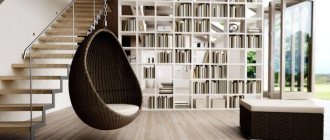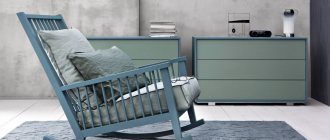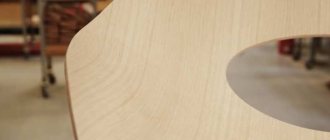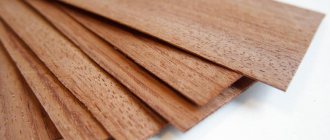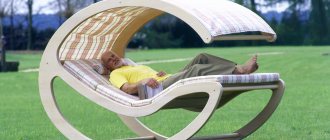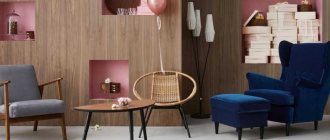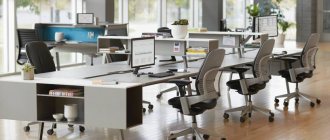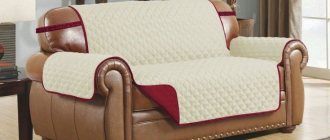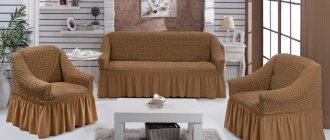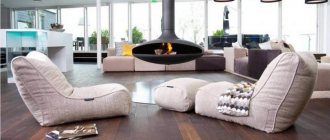The rocking chair is rightfully one of the favorite places to relax at home. There are many types and models of swinging structures made from various materials. One of the popular materials for making swinging chairs is metal. A metal rocking chair can be made at home if you have the necessary experience and tools.
Drawing up a drawing
A DIY rocking chair can be made with a supporting metal frame in the form of a frame or with a forged filling. Forged rocking chairs look much more beautiful, but are more complex to manufacture and require special equipment and skills.
Drawings of the frame metal structure are drawn up on graph paper at a convenient scale. They indicate all the dimensions of the future chair, the length and bending radius of the skis. The difference between the diagram for a forged chair is that all forged elements must be drawn in full size. These drawings will serve as a template for future elements of the chair.
When drawing up a drawing, it is necessary to take into account that the more fastening or welding points a metal rocking chair has, the lower its rigidity.
Types of designs of forged rocking chairs
There is a wide range of models of forged rocking chairs, differing in the design of the base:
- Classic. Mounted on paired curved skids. The armrest is separate. Radius skids without a rear stop may cause them to tip over when rocking too hard;
- Viennese. The runners with armrests form a single arc;
- With bump stops. The runners at the front end at the level of the first supports, but the abrasions are very long. At the same time, their edge is bent down. This prevents tipping over, but causes sounds of hitting the floor at a large amplitude. If you stop suddenly, there is a risk of falling off the seat;
- Elliptical. The runners with the armrest are fused and made in the form of a continuous oval;
- 3 in 1. Skis are made with several edges. As you move, you can get a vertical rocking chair, a reclining position (swinging) or a lounger without rocking. You will have to turn it manually, or by sharply tilting your body. Very large;
- Pendulum mechanism. The runners are smooth and motionless. An arc is welded to their edges. Next, a mechanism consisting of 4 flat strips with bearings embedded in them is attached to the base. In this case, they are placed diagonally or in the shape of a trapezoid regarding the support. Swing type is inertial. Requires mechanical feed to start movement. The device allows you to equip the chair with a folding footrest.
Selection of material
The frame of the swinging system is made of a metal rod with a diameter of 2 cm. To reduce the total weight of the structure, a steel pipe of the same diameter can be used instead of a rod. Blanks for the frame are cut into the following sizes:
- 4 rods measuring 64-66 cm - transverse upper and lower rods for the back and front walls of the chair;
- 2 rods measuring 25-30 cm - vertical posts of the front wall of the chair;
- 2 rods measuring 60-65 cm - vertical posts of the rear wall of the rocking chair;
- 2 rods measuring 85-90 cm - longitudinal upper beams for connecting the front and rear walls;
- 2 arcs measuring 80-100 cm - support skis.
The blanks made can be changed in size based on the preferences of the owner.
Process of creation
To make your own hanging chair, it’s worth remembering:
- in the swing type of chairs, strong fabrics, special rope, and wooden tiles are used;
- the hanging cocoon uses willow or rattan rods, as well as any other flexible branches;
- plastic or metal hoops for appropriate samples.
Regardless of the type of hanging chairs, it is necessary to use durable textile fabrics, high-quality fastenings and ropes.
To make a frame hanging chair you will need:
- a pair of gloves;
- measuring tape and scissors;
- metal hoop;
- connecting ring;
- polyamide tape or thread;
- foam material;
- ropes for suspension.
Manufacturing of support skis
The easiest way to bend an arc under a rocking chair is to use a pipe bender. If such a device is not available, then you can use any groove that is durable. This could be a vice, nearby pillars or tree trunks. To impart curvature, the pipe must be inserted into the groove. To increase the leverage, you can insert a rod into the pipe and bend it to a certain radius.
When making runners, it is necessary to achieve maximum coincidence of curvature. Finished runners can optionally be equipped with wooden overlays. This will reduce noise and add aesthetics to the entire structure.
Rocking chair made of profiled metal pipe
Such a design can be made if there is a special installation for bending metal pipes. Despite the apparent difficulty, it is actually not that difficult to make such furniture; moreover, it is heavy and at the same time stable.
Manufacturing steps:
- Metal pipes are taken and bent on a special machine by rolling the element between three rotating rollers.
- Then two pipes are welded to the two skids, which form the base and form a kind of triangle with one rounded side.
- There is also a semicircular element in the middle, which is welded to the support elements. This is done to increase sustainability.
- Then the transverse elements are assembled in accordance with the drawing.
- After this, the armrests and back of the chair are completed. They are fixed with self-tapping screws and adhesive.
- At the final stage, everything is complemented with soft elements in the form of pillows or special upholstery with foam parts.
Frame assembly
It is better to assemble a metal rocking chair from the sides. To assemble each side, vertical front and rear pillars, a longitudinal beam, and a support ski are laid on the floor. All side elements are welded together. The production of the second side is carried out using the same principle.
After the sides are ready, they are connected to each other by cross rods by welding.
When carrying out welding work, it is necessary to maintain an angle of 90 degrees in butt joints. To do this, it is recommended to use a magnetic square. After welding is completed, all seams must be cleaned.
Manufacturing of forged elements
A rocking chair from forged parts can be made independently, but its production is labor-intensive. A rocking chair, cold forged by hand, is highly durable. During cold forging, the material not only changes its shape, but also strengthens the structure. This occurs by pressing the metal during bending and deformation. To perform cold forging, devices such as a bender, a snail, a flashlight, a wave and a twister are used.
For manufacturing, the forged elements of the rocking chair are drawn in full size. The figure shows all dimensions and forging elements. Using available tools, it is necessary to produce forged parts. During manufacturing, parts must be applied to the sketch from time to time in order to achieve its accurate execution.
The elements are assembled into a single ensemble by welding, after which the structure is cleaned and painted.
Types of forging
The most common way to give metal the desired shape is forging. The following varieties are distinguished:
- Hot. The metal is heated until maximum softness appears. Requires special furnaces with heating temperatures above 1000°C. The effort required to shape is minimal. Used for carbon steels;
- Cold. Heating is either absent or minimal (up to 250°C). The method is suitable for non-ferrous metals and soft alloys;
- Free. Basically it means stamping. The metal is placed into a shaped blank. Pressed with a hammer until it takes the desired shape. Can be produced manually or by machine;
- Artistic. Provides for the manufacture of small complex elements by hand.
In addition, there are many ways to decorate metal:
- Coinage. The main methods are corrugation, graining. Notches are made using a tool with a figured tip and a hammer;
- Inlay. After embossing, the cavities are filled with colored sealing wax in the form of a pattern. For this, molten contrasting metals such as bronze or brass can be used;
- Etching. This is a very broad area of decoration. When using various chemical compositions, metals are given a shade that is not characteristic of them. For example, a solution of inosulfite with lead will give steel or brass a shade from silvery blue to dark blue. With full etching, the part is simply immersed in the solution or repeatedly wiped with a sponge soaked in it. When patterned, the surface is covered with mastic or wax. Next, using needles, a contour is cut out for etching (positive) or the elements of the pattern are cut out with cutters without etching the contour (negative);
- Gilding, silvering. Individual elements of the pattern are coated with the desired composition;
- Thermal toning. The metal is heated using a gas torch until the color changes. Shades can range from golden to brown. When the desired color is reached, heating stops abruptly.
Final adjustment
The principle of adjusting the rocking chair is simple. If the tilt is very forward, then transverse decorative strips can be installed in the rear part behind the back of the structure. They can be made of wood or metal. The slats can act as an independent counterweight, but can also be used as a basis for additional weight.
If the rocking chair falls back too much, then a counterweight must be installed in front. As an option, you can install a footrest under which you can place additional cargo.
We looked at the easiest way to make a chair. We learned how to draw up drawings and assemble structural elements, and gained initial work experience. Once you have acquired a sufficient supply of knowledge and skills, you can move on to the manufacture of more complex structures, such as a pendulum.
Seat and back
The most common seat option is polished wooden slats. They are secured with screws. Allows for high strength while lightening the weight of the structure. The main disadvantage is rigidity. You won't be able to sit in such a chair for long. You are guaranteed numbness in the soft part. To avoid this, the rocking chair is often accompanied by a soft mattress. It completely covers the backrest and seat. Attached to the slats with ribbons. There is another option. A layer of plywood and filler is laid over the seat parts and everything is covered with leather or its substitutes.
As a filler you can use:
- Foam rubber. Material with sufficient strength. At the same time, it is soft and holds its shape well. The service life is about 5 – 6 years. Then it may begin to sag or crumble unevenly;
- Fibers. There are many varieties of material, but they all have a common principle. The basis is a synthetic fiber twisted in a spiral. Next, they are compressed into a hard, springy layer. Withstands loads well and recovers quickly. You should avoid sheets that are too thin. They quickly become deformed;
- Sintepon. Cheap non-woven material. Too thin. The filler has to be laid in many layers with quilting. Over time, this causes deformation with displacement and clumping of the filler. Good as an additional single layer;
- Synthetic fluff. Very soft material, but quickly sags and wrinkles under load. Budget option with a short service life. Mixing it with polystyrene foam balls will allow the seat to last longer.
As a cover you can choose:
- Textile. These should be dense, durable fabrics with a well-defined weave texture. Jacquard, tapestry, linen matting, and cloth have proven themselves to be excellent. But all of them are distinguished by some roughness during tactile contact. In this regard, velvet, velor, flock, and Alcantara are more pleasant. But these fabrics are prone to gradual abrasion and “balding”, with the accumulation of dust;
- Eco leather. A good option for the street. Not afraid of sunlight and water. Doesn't fade. When used, it does not deform and retains its shape. Very durable. Soft and pleasant to the touch;
- Leather. An expensive pleasure. If you can afford it for the street, then choose varieties with good dressing. The thinner it is, the softer the skin. Repels water and dirt. Easy to care for. Very durable.
The best rule for removable upholstered seats is that they “go” into the house with you. Not a single material can withstand long frosts or exposure to rain. And then using such a seat will not be very pleasant.
